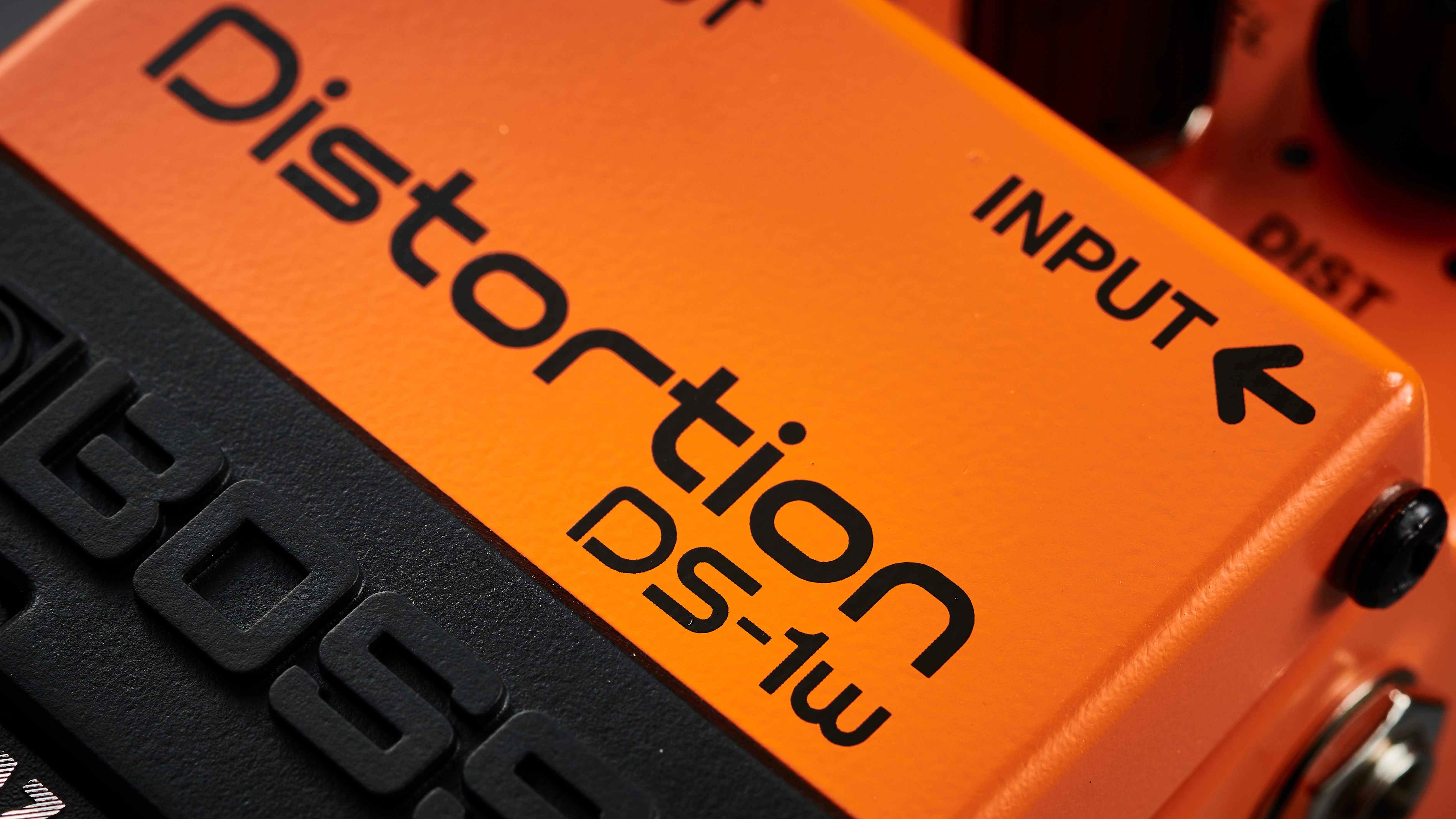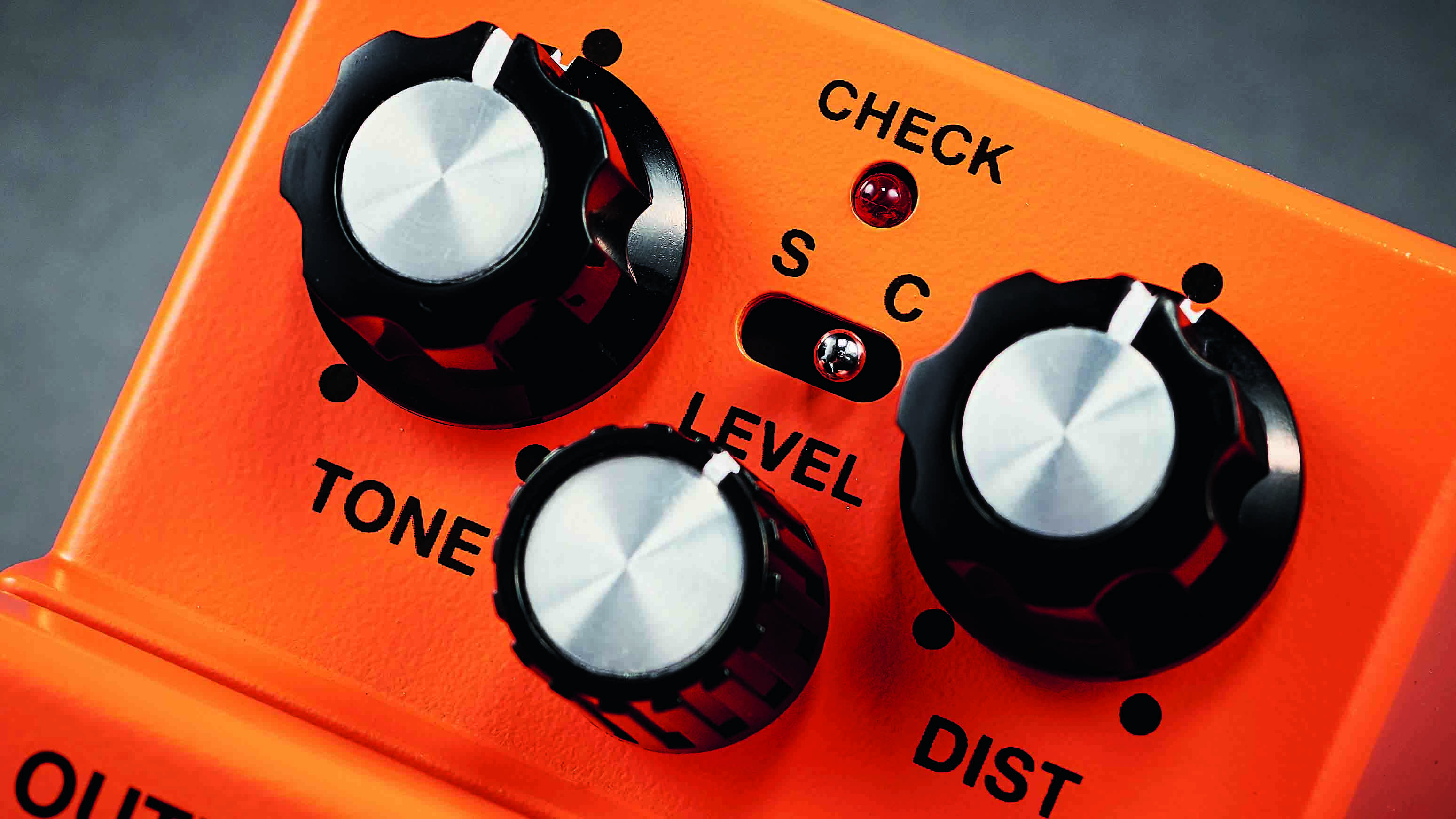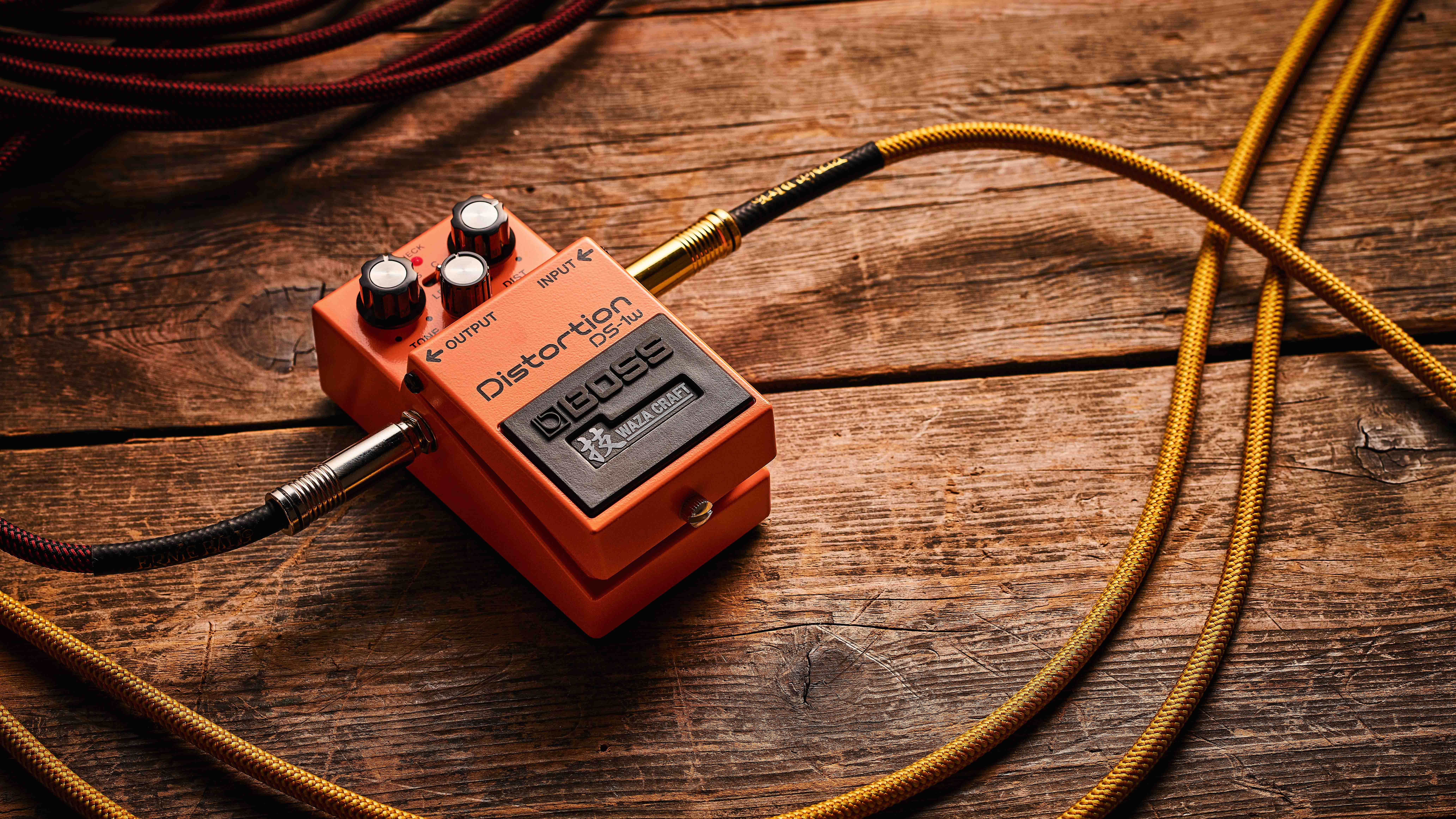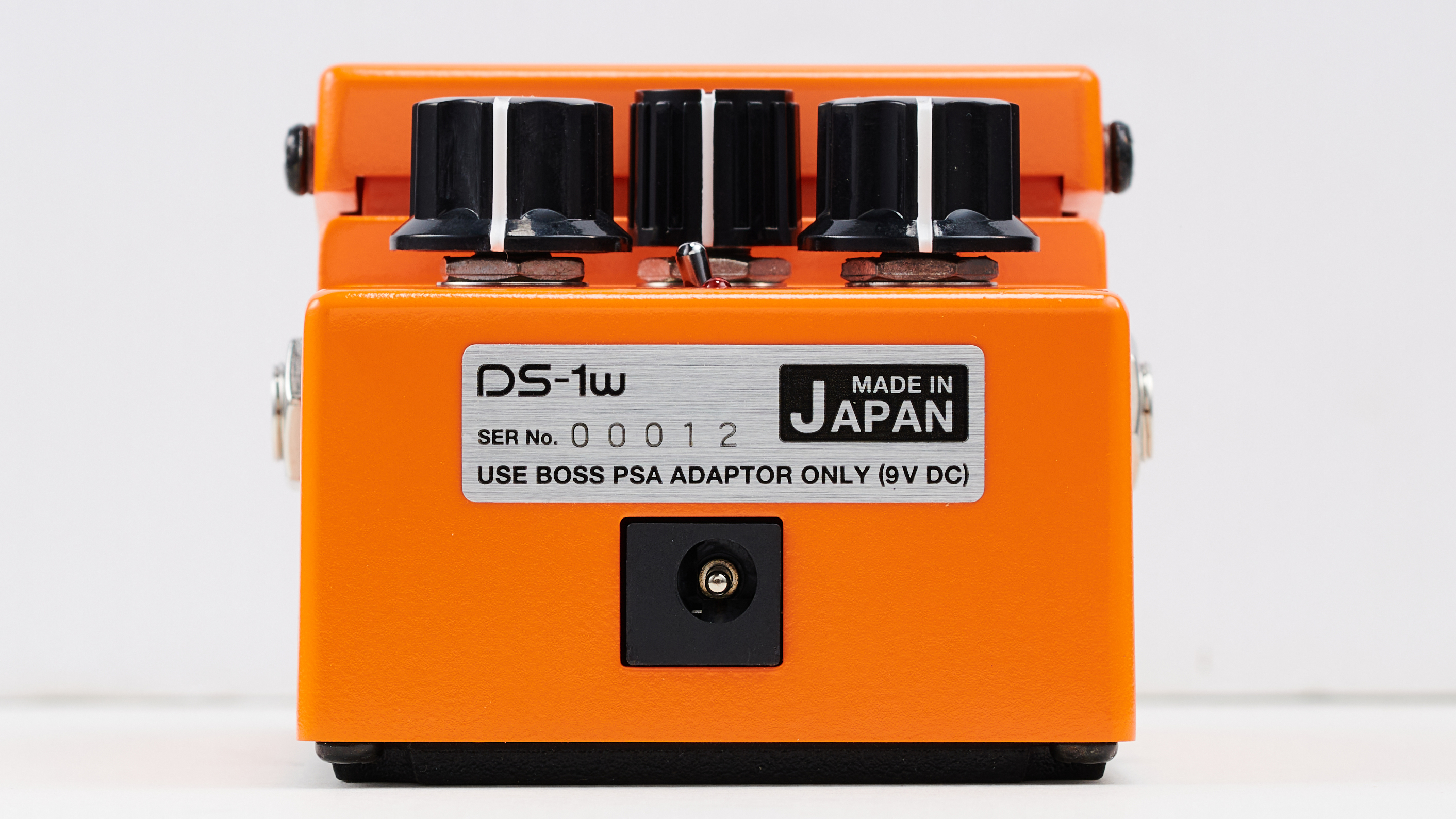MusicRadar Verdict
Forget the ‘under-the-hood’ geekery, the DS-1W is home to some brilliant distortion tones for what is still not unreasonable outlay at today's prices
Pros
- +
Custom mode is a significant upgrade on the original
- +
Excellent hi-gain distortion tones that cut through
- +
The ultimate official DS-1 available
Cons
- -
The custom mode renders the standard mode somewhat redundant
MusicRadar's got your back
Boss DS-1W: What is it?

The gear we use has never been so complex as it is right now. Even the amps we use for practicing at home give us access to an infinite number of tones, more effects than we’ll ever really need, the ability to be our recording interface, or loaded with Bluetooth to play our music through. But it wasn’t always this way, and in 1978 Boss launched its first ever distortion pedal: the DS-1.
It had three controls: Tone, Level and Distortion, and was capable of delivering (for the time) a bucketload of gain without having to crank the controls on your amp into Nigel Tufnell territory. It was a hit, and the DS-1 went on to become the company's best-selling pedal and inform many of Boss’s gain-based compact product line over the decades that followed - and arguably still does.

But, where there’s no real complexity, we can count on ourselves as guitarists to find some. Even this humble three-control, orange stompbox isn’t immune, as it’s seen a few revisions during its lifespan. It’s these revisions that will set guitar forums and social media comments alight, and they begin in 1994.
The first change from the original DS-1 design was the removal of the Toshiba preamp chip found in DS-1s up to that point to an op-amp. Then six years later, the turn of the millenium brought us the DS-1 as we know it today, with a Mitsubishi op-amp taking over clipping duties.

Which brings us up to date with now - the era of the pedalboard. What was an affordable, workhorse distortion pedal is now available in hot-rod modded versions as a boutique pedal in the hunt to take it back to the version that was not-so-lovingly stomped on by a broad church of players including Kurt Cobain, Steve Vai, Robert Smith and many, many more.
So, with prices of used originals only ever increasing, and modded pedals/clones arguably diverting customers’ attention, the DS-1 is the latest Boss classic to undergo its Waza Craft treatment with the DS-1W.
Boss DS-1W: Performance and verdict

One of the best thing about Boss pedals is their familiarity
Essentially, what we have here is a Japanese-made DS-1 with two modes: Standard and Custom. Standard is the common-or-garden DS-1 that we can pick up for around the price of a year’s worth of string changes. Boss describes this mode as a “tight, hard-edged” distortion sound, which is added to by the Custom mode, which promises “a bold new sound that takes the unmistakable DS-1 character to the next level”
Want all the hottest music and gear news, reviews, deals, features and more, direct to your inbox? Sign up here.
One of the best thing about Boss pedals is their familiarity - you know exactly where everything is and how to operate it without having to resort to the R.T.F.M. school of trying it out. So, with the DS-1’s familiar controls positioned at medium levels, we reacquainted ourselves with the Standard mode first, and we’d agree with Boss’ adjectives here.
It’s the same tight, sharp, distortion we know the DS-1 for. With the gain and levels maxed out we get more of the same with a bit more bite to the attack, but cranking the tone control to the right is where the ‘waspy’ side of revised DS-1s comes in. Now, one person’s ‘fizz’ is another person’s idea of a rough-edged sound, so this is of course, subjective, and the number of DS-1s shifted doesn’t lie. If you’re playing aggressive music and are more concerned with sonic abrasion than buttoned-down tone, it’s unlikely to be an issue.

Boss isn’t exaggerating when its says there’s an output boost
The unknown quantity here is the Custom mode, though, and flicking that little horizontal toggle switch is akin to going from watching TV in old school black-and-white, to a large-screen 4K display.
Boss isn’t exaggerating when its says there’s an output boost, as everything leaps forward, remedying the volume-suck that DS-1 detractors point out. But it’s more than just a level jump, because it’s stronger across the frequency range too. Adding to this is a noticeable mid shift that results in a fuller body to our signal, while the high-end buzzsaw tone is rounded off. Overall, it’s smoothed-out in terms of EQ, while maintaining the hard edge of the distortion and pick attack for a truly pleasing high-gain sound.

So much is the difference between the two modes, that switching back to Standard mode feels like everything is narrowed, more boxed-in, almost like a compressor that’s squashing everything down compared to the wide-open, airy tone of the Custom mode. We can see DS-1W owners keeping it permanently switched to the Custom side. It achieves everything the Standard mode does, just more of it and better.
You can save yourself roughly half the price of this pedal by opting for the regular DS-1, but we’d warn that trying the Custom mode of the DS-1W will result in the realisation that the green grass you can spot over the fence is way more than an illusion.
MusicRadar verdict: Forget the ‘under-the-hood’ geekery, the DS-1W is home to some brilliant distortion tones for what is still not unreasonable outlay at todays prices.
Boss DS-1W: Hands-on demos
Boss
Pete Thorn
Guitarist
Let's Play All
Reverb
Boss DS-1W: Specifications

Type: Distortion pedal
Controls: Level, Distortion, Tone, mode switch
Connectivity: Input, output, power jack
Power: 9v battery or PSU (sold separately)
Range options: Boss DS1
Contact: Boss

Stuart has been working for guitar publications since 2008, beginning his career as Reviews Editor for Total Guitar before becoming Editor for six years. During this time, he and the team brought the magazine into the modern age with digital editions, a Youtube channel and the Apple chart-bothering Total Guitar Podcast. Stuart has also served as a freelance writer for Guitar World, Guitarist and MusicRadar reviewing hundreds of products spanning everything from acoustic guitars to valve amps, modelers and plugins. When not spouting his opinions on the best new gear, Stuart has been reminded on many occasions that the 'never meet your heroes' rule is entirely wrong, clocking-up interviews with the likes of Eddie Van Halen, Foo Fighters, Green Day and many, many more.
